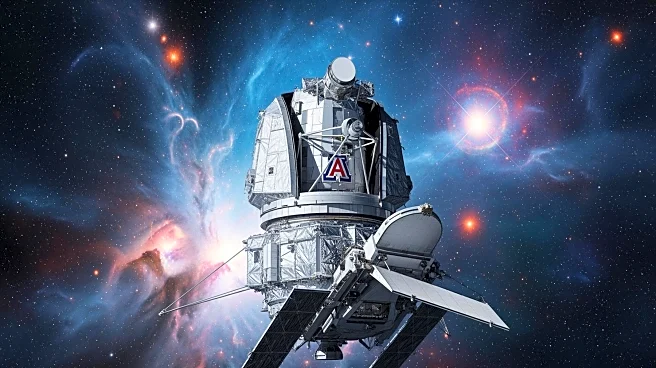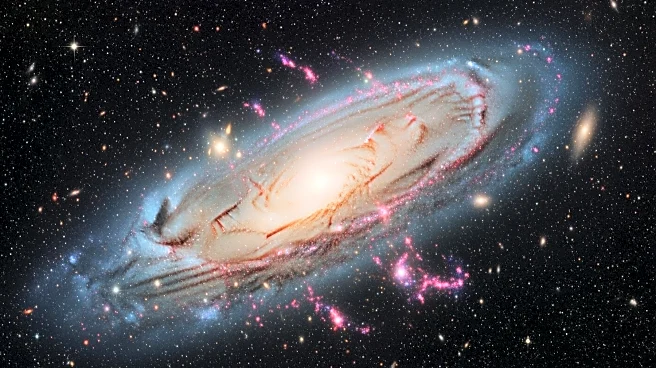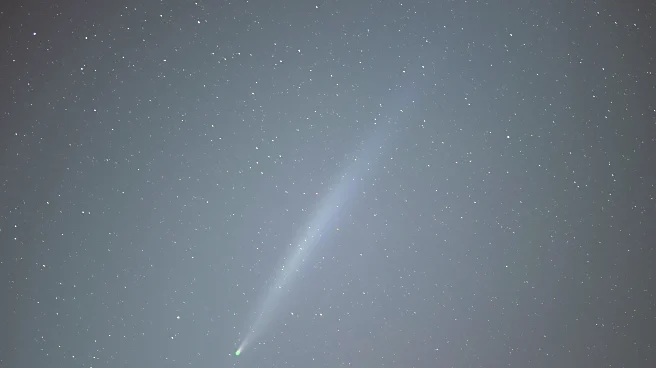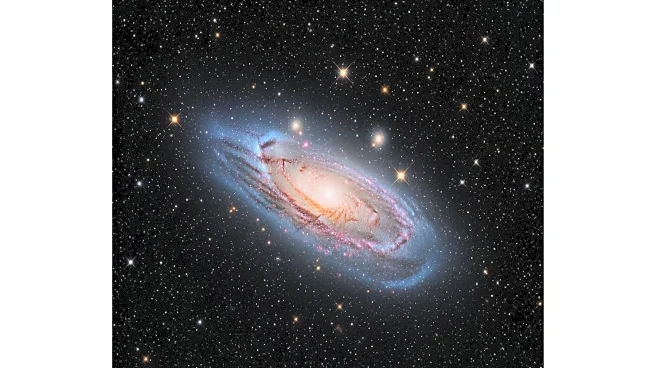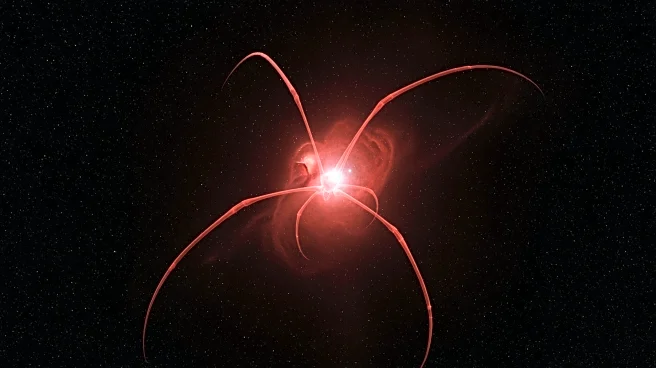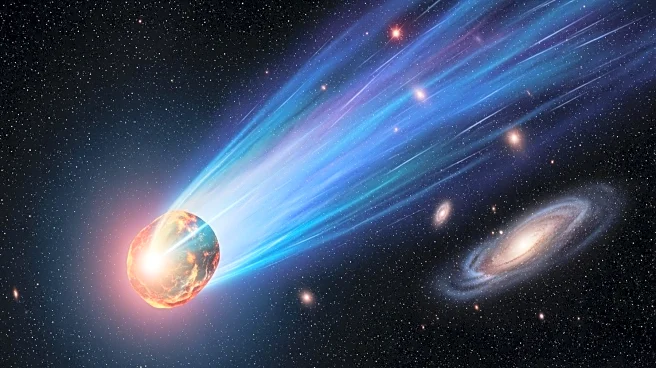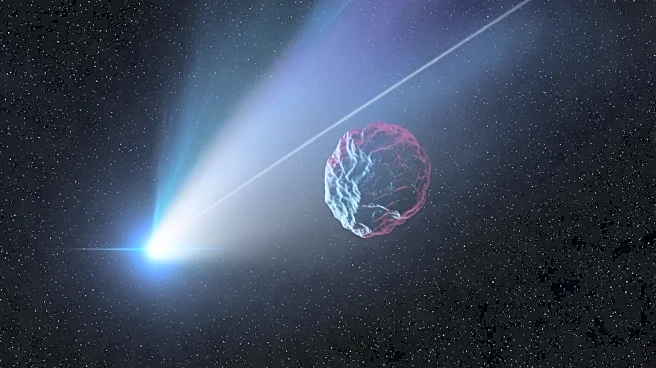What's Happening?
Researchers from the National Institute for Astrophysics (INAF) have studied a Type II supernova, SN 2024bch, which erupted 65 million light-years away. Traditionally, Type II supernovas are thought to
generate narrow emission lines when their ejecta interact with surrounding dense gas. However, SN 2024bch displayed these lines without such interaction, suggesting a different mechanism called Bowen fluorescence. This phenomenon involves ultraviolet light exciting helium atoms, which then transfer energy to other elements, creating the observed spectral lines. The findings could lead to a reevaluation of Type II supernova models.
Why It's Important?
The discovery challenges existing models of Type II supernovas, potentially altering the understanding of these cosmic events. If interaction with surrounding gas is not the primary driver of emissions, it could impact the study of neutrinos and multimessenger astronomy, which relies on observing cosmic events through various signals. This could lead to a shift in how scientists study and interpret data from supernovas, affecting theories on stellar evolution and the behavior of dying stars.
What's Next?
The research suggests a need to reconsider the role of circumstellar interaction in supernova emissions. Future studies may focus on identifying other supernovas exhibiting similar characteristics and exploring Bowen fluorescence further. This could lead to new models for predicting supernova behavior and their contributions to cosmic phenomena like neutrino emissions.
Beyond the Headlines
The findings highlight the importance of adopting new perspectives in scientific research. By challenging traditional assumptions, scientists can uncover novel mechanisms that explain cosmic phenomena. This approach may inspire further investigations into other unexplained aspects of supernovas and their interactions with the universe.


